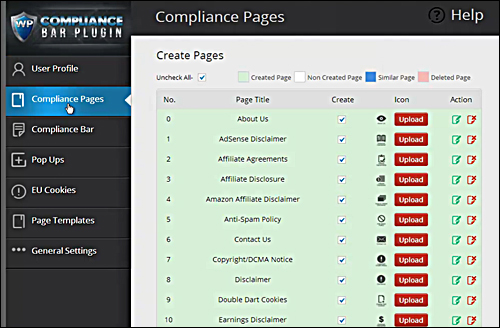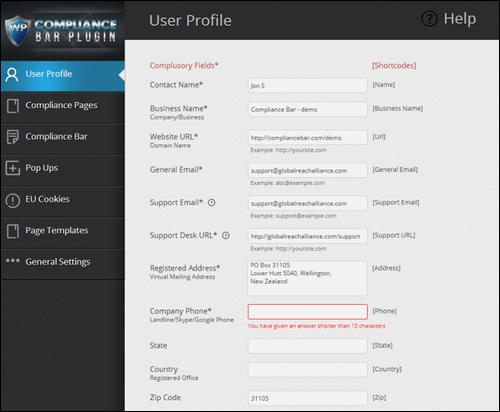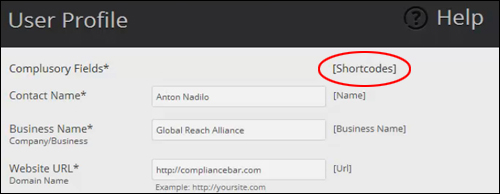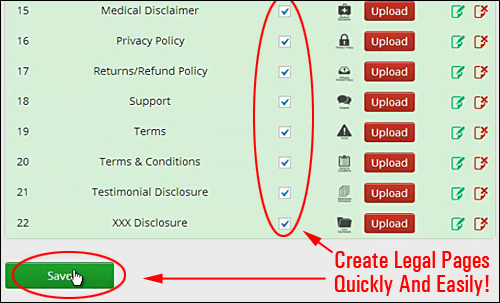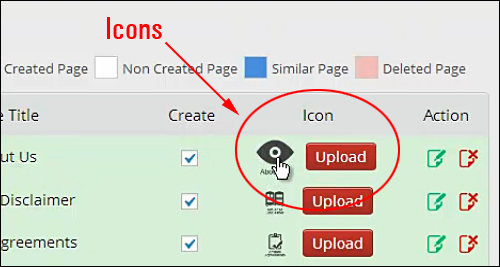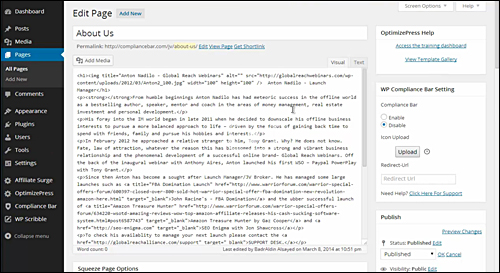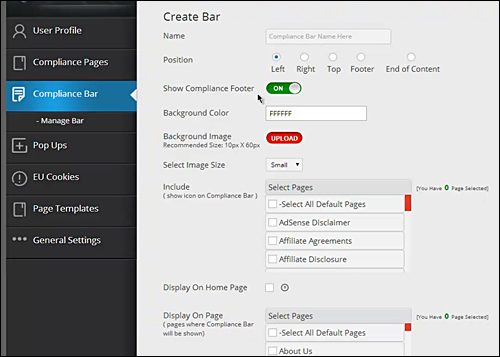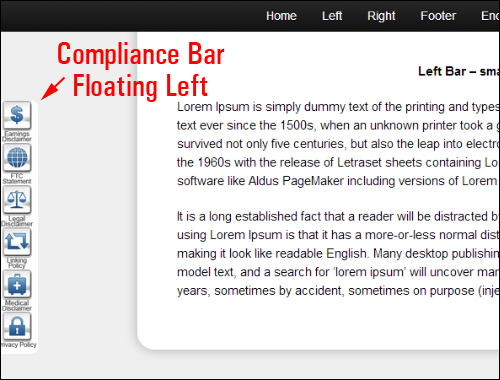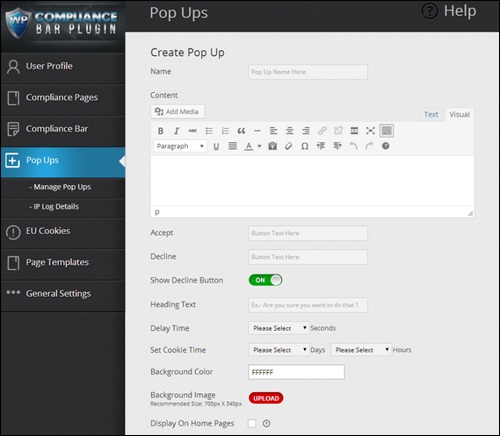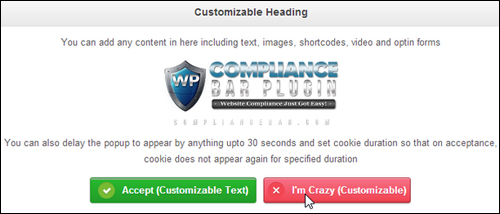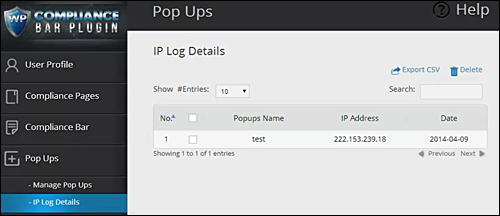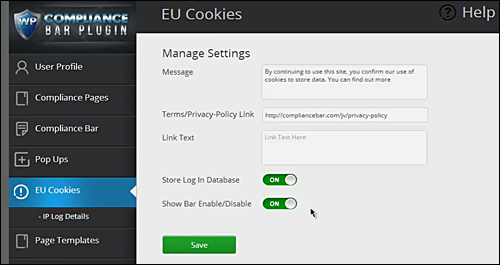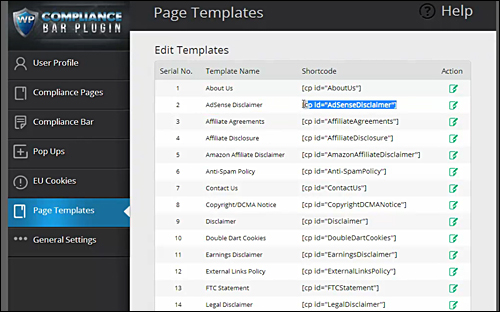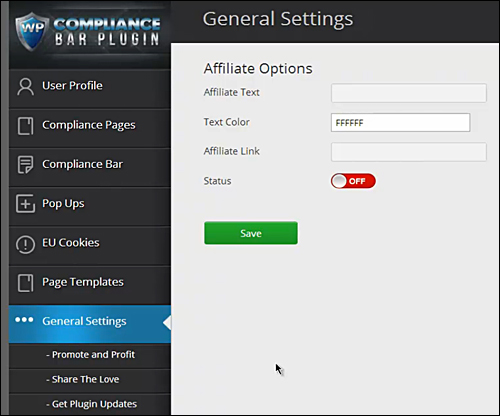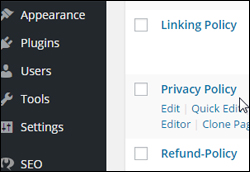 One of the worst things that can happen to you as a website owner is to suddenly discover that you have broken the law.
One of the worst things that can happen to you as a website owner is to suddenly discover that you have broken the law.
Your website must comply with many laws and regulations, some of which you are probably not even aware of.
Being non-compliant not only puts you at risk of incurring serious financial costs, but also the cost to your reputation. Why risk your money and reputation, when you can protect yourself so inexpensively?
In this post, we look at a simple and cost-effective WordPress solution that can help make your website legally compliant just minutes.

Does Your Website Or Blog Comply With All Legal Requirements?
As the digital realm continues growing at breakneck speed and the rules of the game constantly change, it’s vitally important that you stay on top of what’s happening and to make sure that your site remains compliant, especially if your online presence is a fundamental aspect of your business strategy.
If you do not display certain legal pages on your website (e.g. terms of service, privacy statement, legal disclaimers, etc.), many sites such as Google won’t let you advertise, sites like ClickBank will not approve your digital products on their network, PayPal may shut down your account and freeze your funds, Facebook and other social networks could suspend your web apps, and you will not be allowed into a range of other advertising or affiliate marketing networks.
If your web presence is not compliant, you could also end up facing a whole range of penalties, including fines, having your website shut down, even jail time!
At the very least, without making it very clear to your visitors that your digital properties comply with legal requirements and regulatory guidelines, expect visitor trust and confidence in your business to seriously diminish.
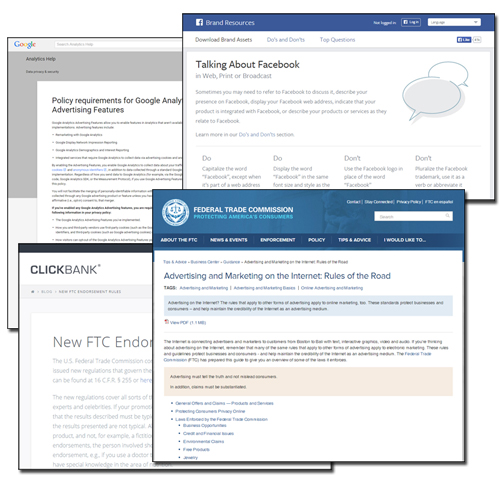
(In addition to legal and regulatory compliance, almost all 3rd-party services require you to comply with their policies!)
![]()
Legal Disclaimer: Please note that we are not lawyers and we cannot offer legal advice in this article.
The purpose of this article is to make you aware that:
- Your website could be subject to a number of legal requirements in accordance with the laws that govern your business,
- How important it is to comply with the terms of service of third-party providers whose products or services you may be offering or endorsing on your website, and
- There are solutions for WordPress website owners that can help your site become more compliant, such as the tool that we discuss in this article.
If your website is falling short in areas of compliance, below we review a simple WordPress plugin that you may be very interested in using.
Our WordPress Plugin Of The Month Is …
Compliance Bar – WordPress Plugin For Website Compliance
Plugin Description
Compliance Bar is a simple plugin for WordPress websites and blogs that contains over 20 customizable compliance templates for your site …
For more details go here: Compliance Bar Plugin
Compliance Bar Plugin Benefits
Here are just a few of the benefits of using Compliance Bar Plugin to make your website or blog instantly compliant:
Quick And Easy To Install And Implement. Be Up And Running In No Time.
Compliance Bar is really easy to install. Just upload a zip file containing the plugin files to your Plugins folder via your WP dashboard and activate.
Easy To Edit Templates
Easily make changes to the pre-built legal page templates inside Compliance Bar from the settings menu using the WYSIWYG editor.
Dedicated 24/7 Plugin Support
The plugin developers provide a dedicated support team to assist you.
Additional plugin benefits include:
- Customized Compliance Page Templates: The plugin will create your legal pages in seconds and customizes them to your business and website.
- Video Training Manuals: Compliance Bar is not complicated to use and a full library of training videos is provided if users need help.
- Use In Every Country: As long as you consult someone who is qualified to give you legal advice to ascertain if the built-in legal templates provided with the plugin are suitable and satisfactory for your business, country and website, you can use the plugin wherever you are located.
- Use On All WordPress Sites: As long as your site is powered by WordPress, you can use the plugin for all website purposes. Select only the types of disclaimers that suit your particular business model (e.g. affiliate or CPA marketing, services, AdSense, AdWords, adult, medical, etc) and leave out those that are not required.
Compliance Bar Features
Compliance Bar Plugin offers a number of features to WordPress users. Here are just some of these features:
- Fast and easy to install and implement. Ready to go to work in minutes.
- Show Visually Appealing Icon Bar – The plugin will display links to your legal pages in the form of attractive icons that can be placed anywhere on your page. You can also upload your own icons.
- Display Sensitive Information – If you plan to display content that may be restricted to certain age groups (e.g. content related to alcohol, tobacco, adult-related, etc.), the plugin can display pop-ups that require users to accept your terms or disclaimers.
- EU User Cookie Compliance – If you do business in Europe or display your content to visitors in the EU, you need to make users aware of your user cookies and notify them of how you use them. The plugin displays an attractive bar notifying users and covering your website from non-compliance.
- Record & Store IP Acceptance – The plugin can record and store the IP addresses of your visitors for reference, just in case a visitor accepts your terms or disclaimers and then claims they didn’t.
- Shortcode Driven – Compliance Bar is integrated with shortcodes to automatically populate templates with your personal information. These shortcodes also allow you to place information anywhere on your website, (even in the popups).
- Mobile Friendly – The plugin has individual settings for displaying on mobile devices or tablets and displays mobile optimized icons automatically depending on the browser being used.
Using Compliance Bar
After installing and activating the Compliance Bar plugin, the plugin’s “Settings” area is added to your WP admin area.
Let’s briefly review these settings …
User Profile
There are a number of default categories in this area where your business details can be input (e.g. “Website URL,” “Company Address,” “Location Details,” “Refund Duration (Days),” etc.). Not all categories are compulsory, but some are (e.g. “Website URL,” “Company Phone Number,” etc.)
(Compliance Bar Plugin User Profile Section – Image sourced from plugin documentation)
Compliance Bar uses dynamic shortcodes to populate the information from your User Profile fields in your legal pages …
(Compliance Bar User Profile Page: Shortcodes – Image source: plugin documentation)
Once the minimum required (i.e. compulsory) information has been entered into the profile fields, users can then access the other areas of the plugin.
Compliance Pages
The “Compliance Pages” area contains all of the compliance templates …
(Compliance Bar: Compliance Page Templates – Image source: plugin documentation)
Here’s the full list of legal templates made available by the Compliance Bar plugin when we last checked the site:
- About Us
- AdSense Disclaimer
- Affiliate Agreements
- Affiliate Disclosure Statement
- Amazon Affiliate Disclaimer
- Anti-Spam Policy
- Contact Us
- Copyright/DCMA Notice
- Disclaimer
- Double Dart Cookies
- Earnings Disclaimer
- External Links Policy
- FTC Statement
- Legal Disclaimer
- Linking Policy
- Medical Disclaimer
- Privacy Policy
- Returns/Refund Policy
- Support
- Terms
- Terms & Conditions
- Testimonial Disclosure
- Adult Content Disclosure
Creating compliance pages for your website is a simple process. Just select the checkboxes next to the pages you want to create and click ”Save” on the “Compliance Pages” area …
(Compliance Bar: Legal Templates – Image sourced from plugin documentation)
Your legal pages will then be created and added to your “Pages” section.
Compliance Bar Icons
The plugin is installed with a default set of attractive icons for referencing your legal pages …
Icons can be changed. You can purchase an additional set of icons from the plugin developer, or create/upload your own to match the style of your theme …
(Compliance Bar: Compliance Page Icons – Image sourced from plugin documentation)
Edit / Delete Compliance Page Templates
You can easily edit and delete the legal page templates from the “Compliance Pages” tab, just as you would any other page in WordPress …
(Compliance Bar Plugin: Edit Compliance Pages – Screenshot source: plugin documentation)
![]()
Notes
- Editing is recommended, as the pages contain generic content.
- The plugin notifies you if it detects existing similar pages on your site (e.g. pages created before you installed the plugin).
Compliance Bar
The plugin settings area provides many options to customize the Compliance Bar, including where to position the bar, displaying links or icon images, background colors and images, image size, specifying which pages to include an icon for in the Compliance Bar, whether or not to display the Compliance bar on your front page, which pages the Compliance Bar will display in, mobile settings, etc. …
(Compliance Bar Section: Create Bar – Image source: plugin documentation)
Notes:
- You can create more than one Compliance Bar to show different icons on different pages, or to cover a multitude of uses throughout your site.
- The plugin allows you to display the Compliance Bar on the home page of your website, even if you are using a specific WordPress theme (e.g. Genesis, Thesis or Woo), where the home page is configured through the theme settings as a built-in template, and not as a normal “static” WordPress page.
- Due to the smaller size of mobile devices, you can only select up to a certain number of page icons to display if you turn Mobile Settings “on.”
Once you have configured your Compliance Bar settings, it displays links to your legal through a visually appealing icon bar on your site …
You have complete control over the location on your pages where you would like to display the compliance icons …
PopUps
If your site contains content that needs to be restricted to certain age groups (e.g. content related to alcohol, tobacco, adult, etc.), the plugin can display popups that force users to accept your site’s terms or disclaimers.
The “Create Pop Up” screen gives you full control over the settings and wordings of your pop ups …
(Pop Ups Section: Create Pop Up – Image sourced from plugin documentation)
You can create an unlimited number of customized Pop Ups displaying on different pages, or to cover different uses in different sections of your website …
You can also set a delay time to prevent a Pop Up from displaying immediately, set a cookie duration to prevent Pop Ups from displaying again within a specific time interval, and even record the IP addresses of visitors who accept your terms and disclaimers for future reference …
(Pop Ups Screen: IP Log Details – Image source: plugin documentation)
EU Cookies
If your business is based in Europe or display your content to EU visitors, you need to be aware of EU Cookie law …
Compliance Bar lets you customize the settings for compliance with EU Cookies requirements, including the wording of your notification message and link text in the “EU Cookies” screen …
(EU Cookies Screen: Manage Settings – Image sourced from plugin documentation)
Compliance Bar has a non-intrusive way of notifying your visitors and covering you from non-compliance.
Page Templates
The “Page Templates” area, lists all of your legal page templates and shortcodes, and lets you edit the page content …
General Settings
The “General Settings” screen, lets you access general information, such as promoting and sharing the plugin and getting plugin update notifications …
User Feedback
Here are a couple of the testimonials and feedback plugin customers have provided for the Compliance Bar Plugin plugin:
”I got a chance to review the Compliance Bar plugin…WOW!! I have to say that its definitely one of the most NECESSARY, yet easiest to use plugin’s to hit the scene in a while. Very Solid Product. Great job Anton & team!” Shon Chris – Director (JV Peer Group)
***
”Truly Amazing Product!” Patrick Mauchant – PT Enviromate Technology
Useful Tips
Here are some additional ways to use Compliance Bar:
- Protection against content theft by spelling out terms of use of your website.
- Displaying compliance icons only on specific pages of your site.
- End refund disputes by clearly spelling out the refund terms before purchase.
- If your site published adult content, you can force visitors to click to confirm that they are of legal age to access your content.
Plugin Support
Plugin Developers provide users with a dedicated team to assist you with anything you need. You also have access to an entire library of training videos.
Additionally, your purchase is backed by a risk-free, thirty day, 200% money-back guarantee. If your copy of Compliance Bar does not work within 30 days of purchase and it cannot be fixed within 48 hrs (Monday to Friday), your purchase price will be refunded in double.
Product Price
- Single User License – Install the plugin on one site that you own. Price = $47 (Normally $127)
- Business License Edition – Can be installed on twenty-five of your own sites. Price = $67.00 (Normally $197).
- Professional Licensing – Install the plugin on all as many of your own sites as you want. Install the plugin on all client sites for payment or as part of a paid service. Cost = $97.00.
Note: The cost of purchasing Compliance Bar Plugin can vary, depending on whether there are any promotions or limited-time specials being offered. Currently, the software is being retailed for the pricing shown above. This may or may not be the actual pricing set by the software author when you visit the plugin website and there may be additional upsells or one-time offers after you’ve purchased.
Check the plugin’s website for current pricing details: Compliance Bar – WP Compliance Plugin
Compliance Bar Plugin – Additional Information
Legal Templates Approved By Lawyers – The plugin developers state on their website that all legal page templates have already been reviewed and approved by lawyers. Nonetheless, we strongly recommend that you get legal advice from a qualified legal expert in your area to ensure that your site is fully compliant.
For ”how to” videos of the plugin in action, including help documentation and tutorials, FAQs, support help desk, contact details and more, visit the Compliance Bar website.
Install The Plugin
Compliance Bar is an easy-to-use, simple and cost-effective solution for WordPress-driven websites and blogs. We recommend installing this plugin for WordPress users if you want immediate peace of mind and legal protection.
To learn more, visit the plugin website: Compliance Bar Plugin – Compliance Bar Plugin – Compliance Plugin For WordPress
![]()
Disclaimer: Once again, please note that we are not lawyers and we cannot offer legal advice on our website. Do your own due diligence and consult a legal expert about the best way to ensure that your website is compliant with the law in your country or region.
***

